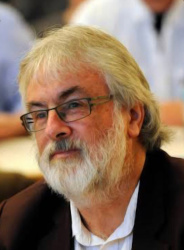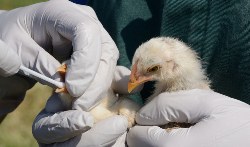What can Israel and the Hamas learn from Ireland
[The TV documentary series Cycles of Enmity was based on the notion of viewing someone else’s conflict. Israeli journalist Yehuda Litani was chosen to do the segment about Ireland. His observations about the lessons from Ireland to the Israeli-Palestinian conflict have been fascinating to say the least. For some reason neither Ynet last time or Haaretz this time chose to provide English version forcing this News Service to provide the translation.
Some readers familiar with the Irish conflict over the past forty years may find the details superfluous (Litani was writing it for an Israeli audience after all) but as I was translating the article I was struck by the amazing parallels at every step. So you may find something new in it even if you are familiar with Irish history. - Sol Salbe]
The independent Middle East News Service concentrates on providing alternative information chiefly from Israeli sources. It is sponsored by the Australian Jewish Democratic Society. The views expressed here are not necessarily those of the AJDS. These are expressed in its own statements
No Choice – we can’t get rid of each other
What can Israel and the Hamas learn from Northern IrelandBy Yehuda Litani
Hamas’s rise to power and the question of whether it will ditch terrorism and renounce its aim of destroying Israel is evocative of the experience of the IRA in Ireland. The Irish group and its political wing, Sinn Fein, switched from fervent extremism and undeniable terrorism to power sharing and in the process abandoning their main aim: the removal of Britain from Northern Ireland.
The bloody epoch in Northern Ireland known by the ever-so-British genteel euphemism of “The Troubles” began in 1968 and was brought to an end about thirty years later with the signing of the Good Friday Accords in April 1998. During those years over 3,000 people: Catholics, Protestants and British soldiers were killed. Tens of thousands were injured, some which have remained crippled for the rest of their lives. (About 1.7 million people, both Protestant and Catholics live in Northern Ireland.)
The original Irish Republican Army was formed in Ireland during the First World War during the early days of the Irish struggle for their independence from Britain. Once the British left the south and allowing the formation of the Irish Free State, the organisation remained in existence. The military wing even conducted a serious of bombings on the British mainland in the early days of Wold War II. There was also the political wing, Sinn Fein (which means We Ourselves in Irish Gaelic.)
During the “Troubles” a group of Catholic militants formed an organisation with a slightly different name the “Provisional”IRA indicating that its existence was temporary - till the British were forced out of Ireland; thereby distinguishing it form the original IRA. The distinction is still observed in Ulster but the fine points of Irish politics are ignored in the rest of world where the organisation is simply known as the IRA.
As early as ‘seventies the militant organisation resorted to violent methods. The British security forces and the protestant underground responded in kind. Murder, more often than not in cold blood, as well bombings of army barracks, police stations, shops pubs and shopping centres became common place. A particularly cruel method used in Northern Ireland by both the Catholic and Protestant sides has been “knee capping.” It was used as a punishment for disloyalty both real and imagined. Shooting somebody in the knee results in either full or partial paralysis, not to mention the serious damage to the injured knee. To this day you can see in the streets of northern Ireland thousands of men dragging their legs.
Limited Support
In contrast to the sweeping Hamas victory at last week’s election the IRA and Sinn Fein never won any elections in Northern Ireland. Even among Catholics it always ran second to the rival Catholic outfit, the Social Democratic and Labour Party (SDLP) under the leadership of John Hume. During every election campaign prior to the 1998 peace accords Sinn Fein’s vote never exceeded 15.5 per cent. The more moderate SDLP that was oppose to the use of violence obtained a majority among Catholic voters.
The change came following the April 1998 peace agreement – when the IRA gave up on its main aim of removing the British from Northern Ireland – accepted a ceasefire and agreed to the decommissioning of its weapons. (It later got rid of its weapons altogether,) It was only then, when the IRA turned into a quasi-normal party, that its political wing was able to win over the majority of the Catholics in the North and was thus able to defeat the SDLP.
Choosing the path of peace wasn’t easy. Right up to the mid-Eighties the organisation was committed to an extreme path without compromises. It was raising funds from supporters in the US for the purpose of buying an arms and explosives. During the year 1985-86 the organisation purchased a 120 tonnes of weapons including Kalashnikov rifles, machineguns and explosives from Libya. The arms deal increased the level of IRA terrorist activities especially in the regions bordering the Irish republic.
During that period the ties between the IRA and the PLO were strengthened. It was common to see posters in Belfast of a balaclava-clad, Kalashnikov-armed IRA fighter positioned against a map of a whole of Ireland. Shaking his hand was a PLO fighter, face hidden by a keffiyeh posing against a map of the whole of Palestine. Underneath it said “PLO-IRA one struggle”. During a visit to the Sinn Fein headquarters in Belfast in the mid-eighties I asked the party spokesperson why the State of Israel was wiped of the map and in its place large letters said “Palestine.” He replied that it was an unfortunate error that should be immediately corrected, altering it by hand to add “Israel.” (No doubt that was wiped off immediately after I left.)
Following the exposure of the Libyan Arms deal and the wave of Catholic terror bombing the British Security authorities turned nasty. Under a directive from the then Prime Minister, Margaret Thatcher, a special SAS force was set loose on the IRA leadership. Using similar tactics to the ones used by Israel in the Palestinian Territories it systemically eliminated the IRA commanders with frightening regularity.
And thus at beginning on 1987 it dawned on Gerry Adams and Martin McGuinness, both former senior IRA commanders, that they won’t be able to kick the British out in the near future. There was a need to reach an accommodation with the enemy. At the same time the Protestants realised that they could not beat the Catholics or force them out either. For the Protestants the main problem was demographic. During the ‘eighties they concluded that the continuing emigration of Protestants to Britain and the higher Catholic birth rate (five to eight children in each family if not more) meant that as time goes by they would lose their majority in Ulster. Therefore the time has come for negotiations.
From the moment the IRA leadership realised that “for the moment” they couldn’t kick the British out there was rapid progress towards peace and understanding. The initial dialogue in the early ‘nineties which was mediated by the Irish government was with the SDLP. Later on negotiations commenced with the British. A ceasefire was obtained in 1994. The ceasefire faltered in 1996. But by July 1997 it was back on again and both the Irish Republic and the United States applied increased the pressure to force an agreement. The Accords were finally signed in April 1998 setting out clear demarcation of both sides’responsibilities.
Since the Good Friday Accords the IRA’s relationships with both the British and protestant rivals have had their ups and downs. For some years IRA leaders Adams and McGuinness set in a joint government with the Protestants. (Former terrorist McGuinness was given charge of education and was regarded as very successful in that portfolio.) Members of the former Protestant paramilitary organisations shared the government benches with them.
Recent years have seen yet another breakdown between the sides. The Stormont Parliament was dissolved and control reverted to Westminster. Nevertheless the IRA had continued on the peace path. A few months ago they announced their intention to disarm. In fact they have rid of the overwhelming majority of their weapons. Today, about eight years since the Good Friday Accords there is almost no vestige left of the Catholic paramilitary organisation. Most of its weapons have been taken away and its ten years since it carried out any military training. These days the organisation operates in the civil- political sphere only. There’s a good chance that a joint Catholic-Protestant government will be formed again despite the strong opposition from the Protestant extremists lead by the Reverend Ian Paisley.
Will the Hamas follow the IRA paths? It’s difficult to transfer the lessons from one case to one other. True, the Catholic underground organisation had a pronounced religious aspect (deep identification with the Catholic Church and its doctrine.) But on the other hand neither the IRA, nor the Protestant militias, saw Northern Ireland as being sacred. This is in sharp contrast to the Hamas which tends to emphasise the sacredness of Palestine and its land being Waqf (endowment) of all world’s Muslims.
Nevertheless it is reasonable to assume that once Hamas gets into power it will encounter the reality that would force it, like IRA (and the PLO) before it, to adopt a more flexible approach. Being in government is different to being underground. It will have to accept a co-existence with its bitter Zionist enemy.
[Translated
by Sol Salbe. Hebrew original: http://www.haaretz.co.il/hasite/pages/ShArtPE.jhtml?itemNo=675969
&contrassID=2&subContrassID=2&sbSubContrassID=0]


 Gordon Campbell: On The Coalition’s Awful, Not Good, Very Bad Poll Results
Gordon Campbell: On The Coalition’s Awful, Not Good, Very Bad Poll Results Ian Powell: Policy Vacuum Enables For-profit Corporate General Practice Ownership By Stealth
Ian Powell: Policy Vacuum Enables For-profit Corporate General Practice Ownership By Stealth Gordon Campbell: On Iran Killing Its Rappers, And Searching For The Invisible Dr. Reti
Gordon Campbell: On Iran Killing Its Rappers, And Searching For The Invisible Dr. Reti Peter Dunne: MPs Unusually Quiet On Pay Rise
Peter Dunne: MPs Unusually Quiet On Pay Rise Ian Powell: Cuba And New Zealand: A Relationship Worthy Of Strengthening
Ian Powell: Cuba And New Zealand: A Relationship Worthy Of Strengthening Gordon Campbell: On bird flu, AUKUS entry fees and Cindy Lee
Gordon Campbell: On bird flu, AUKUS entry fees and Cindy Lee